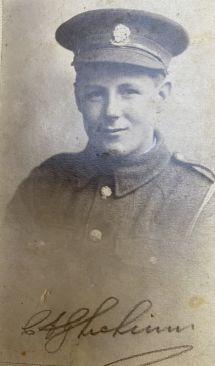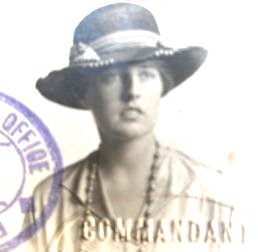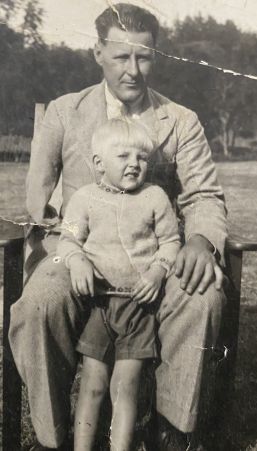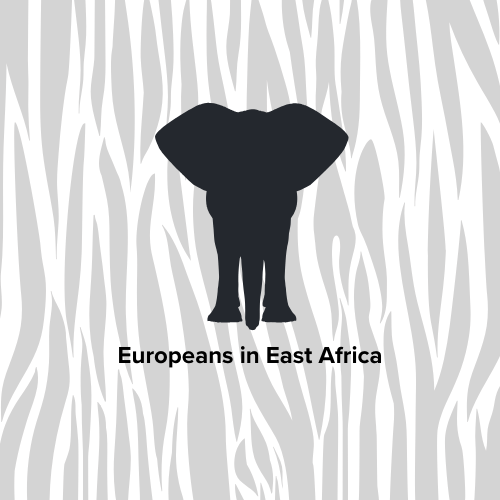View entry
Name: McMINN, Charles Arthur Gordon



Photo Source: Charles McMinn (grandson)
Birth Date: 15 Jan 1899 Willesden Green, London
Death Date: 6 Nov 1935 Nairobi
First Date: 1918
Last Date: 1935
Profession: Planter
Area: Koru
Married: 1931 Hilda Colonna Radziwill Edith Jeanne Marie Meredith de Miremont b. 1895, d. 14 Jan 1960 Kenya (prev. m. in 1918 to Thomas Gerald Auckland Moncreiffe 1888-1922 and in 1923 to Capt. Geoffrey Lionel Smith 1896-1984). She was the dau of Count Francis de Miremont
Children: Charles Arthur Roydon McMinn (26 Mar 1932 Nairobi -22 Dec 1989 Chesterfield); son 'Boo' (died in childhood)
Book Reference: Red 25, Red 31, Hut, Red 22, Barnes, Burke, Gazette, KAD
War Service: 28th London Regt
School: Battersea Grammar School; St Oswald's Coll., Ellesmere, Shropshire (Ellesmere College)
General Information:
Red 25 has A.G. McMinn, Koru, Hut the same
The Ellesmerian Club (via John Harvey) Charles Arthur Gordon McMinn, the only son of Arthur and his wife Susannah, was born in Willesden Green, London on 15th January 1899. A younger sister, Isabella, was born in 1901 and his father was a civil engineer who predominantly worked for the gas companies at the time. For the three years prior to his arrival at Ellesmere College on 20th January 1911, Charles was educated at Battersea Grammar School. Charles fully contributed to college life out on the playing fields. He played hockey, tennis and cricket for various dormitory teams but was also selected to represent the college in rugby and football. Charles left the college at the end of the winter term in December 1914 and would have been too young to enlist. However, his military service records have survived and tell a slightly different story. Charles signed his Attestation Papers at the Duke’s Road Headquarters of the London Regiment on 7th April 1915 and declared that he was eighteen years and ten months old. He was posted as Private McMinn, Service No. 760529 (later changed to 3610) to the 3/28th Battalion, the Artists’ Rifles Officer Training Corps and underwent his basic training from 8th April through to 11th August. The next day he embarked for service in France and remained there until the end of May 1917, although it is not known exactly where he saw action. On 21st May 1917, he was severely wounded and suffered a fracture of his right arm. He was hospitalised, treated and returned to England on 26th May, no longer fit for active service. He was awarded the Silver War Badge and honourably discharged on medical grounds on 9th January 1918. Unfortunately, there would appear to have been complications with his arm as in December 1917 it was amputated. His military service had lasted just under three years and Charles was also awarded the 1914-1915 Star, the Victory Medal and the British War Medal.
It seems that, having survived front line service, Charles decided there was a better life to be had in Africa and so he embarked the ss Hirano Maru at Birkenhead on 6th March 1918 bound for Durban, South Africa. The passenger manifest records his correct age, 19, and that he was an ex-soldier.
Charles Arthur Julian McMinn (grandson) Charles McMinn enlisted as a Private in the 3/28th Battalion, London Regiment (Artist’s Rifles), at the Duke’s Road Headquarters of the London Regiment on 7 April 1915. His Service number was 3610, later changed to 760529. He had lied about his age, his attestation paper listed his apparent age as 18 years and 10 months. In reality he was a little over 16 years and 2 months old. The period 8 April 1915 to 10 August 1915 was spent in the UK undergoing basic training. During this time he was transferred, on 30 July 1915, to 1/28th Battalion, London Regiment in preparation for his transfer overseas to France. Between 11 August 1915 and 26 May 1917 he was in France as part of 1/28th Battalion, London Regiment. The 1/28th Battalion, London Regiment served as a Guard Battalion at the British Expeditionary Force (BEF) General Headquarters(GHQ) in St Omer, 11 November 1914 to 30 March 1916, and then Montreuil-sur-Mer until June 1917. Whilst the BEF GHQ was at Montreuil-sur-Mer the 1/28th Battalion was based some 15km to the south east at Hesdin. Elements from the Battalion were also established as an Officer Training Corps based initially at Bailleul from 28 October 1914, moving to the village of Blendecques, 4km south of St Omer, in April 1915. There it became known as the GHQ Cadet School, divorcing it from the Battalion. The 1/28th Battalion diary paints a fairly monotonous daily routine comprising Guards, fatigues, and Company training during its’ time as the Guard Battalion. Ultimately the Battalion was transferred to the 63rd (Royal Naval) Division in June 1917. On 21 May 1917 he was seriously injured by an ‘aerial dart’, probably dropped during a German air raid on GHQ, which fractured the humerus of his right arm. He was sent back to the UK on 26 May 1917 to receive additional treatment and recover. Following complications with his recovery his right arm was amputated at St Mary’s Convalescent Hospital in Roehampton on 19 December 1917. Being now unfit for further military service his discharge was approved 21 December 1917 and he formerly left the army on 9 January 1918, having served a total of 2 years and 278 days. His character on discharge was described as ‘Very Good’. Due to the nature of his discharge he was awarded the ‘The War Badge’.
The Silver War Badge was issued in the United Kingdom to service personnel who had been honourably discharged due to wounds or sickness during World War I. The badge, sometimes known as the Discharge Badge, Wound Badge or Services Rendered Badge, was first issued in September 1916, along with an official certificate of entitlement. The badge was intended to be worn in civilian clothes. It had been the practice of some women to present white feathers to apparently able-bodied young men who were not wearing the King's uniform. The badge was to be worn on the right breast while in civilian dress, it was forbidden to wear on a military uniform. On the 16 January 1918 he was awarded a weekly pension of 27/6 (27 shillings & 6 pence) payable in advance and backdated to 10 January 1918.
